What Will You Learn? 👇
What is tail docking?
Docking is a technique used for removing a dog’s tail. This is common amongst many owners and breeders with Poodles. Tail docking in Poodles is done for cosmetic reasons or to prevent injuries. While I can’t speak for most owners, this is an outdated practice that still occurs but is not as popular as it used to be.

If you’re a dog owner, tail docking is a topic you should take seriously. I say this because it’s against the law in some countries, and it’s a topic you should be fully aware of before deciding to make your dog undergo it.
History of poodle tail docking
To understand tail docking further, we have to trace back the technique to its roots. The truth is, tail docking is not a new technique to come to the dog world; in fact, it dates back to Ancient Rome.

Read our Smart Poodles - Smart Tricks eBook for only $2.99
Dive into a treasure trove of engaging tricks and tips designed specifically for your poodle!
Many owners believed that if a dog’s tail was removed on the “fortieth day,” they would not get rabies in the Roman era. But, that was back then, and there were a lot of mystic beliefs associated with it.
Through time, the reasons for docking evolved to help strengthen a dog’s back, increase speed, and prevent injuries from rattling, fighting, and baiting.
Hunting waterfowl
The Poodle had its tail docked to help make them more streamlined in the water. If you weren’t aware already, the Poodle was a breed commonly used in Germany to hunt waterfowl such as ducks and birds.
It was believed that the pompom type tail for the Poodle made them slower in the water, and they were not able to catch as much when out hunting. Alongside this, it was thought that tails in a hunting dog could trigger an infection and pain from excessive tail wagging, making it difficult to hunt.
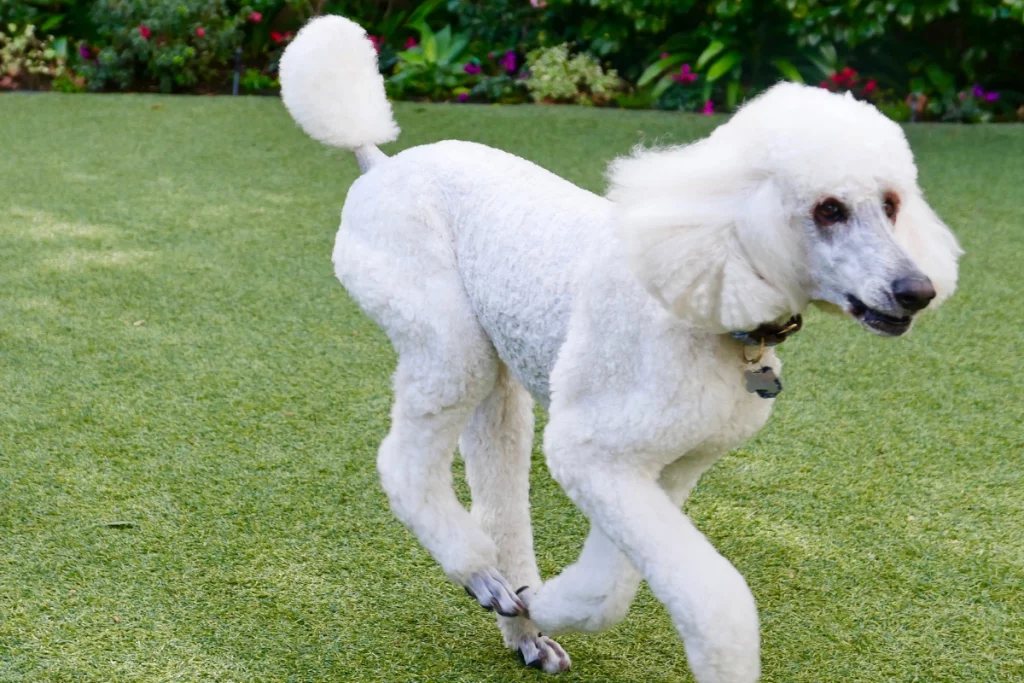
Class status
The Poodle was once a dog of the social elite. However, once the Poodle’s popularity started proliferating worldwide, many people gained access to them. To define the difference in class, many distinguished wealthy owners chose not to dock their tail to signify they were a member of the upper class. At the same time, the lower class owners docked the Poodle’s tail.
Cosmetic purposes
Today Poodle owners and breeders tend to dock a Poodle’s tail for cosmetic reasons for show or buying purposes. Most of the time, it’s up to the breeder’s decision or a personal decision from an owner to dock a Poodles tail depending on if it fits in with breed standards as per the American Kennel Club (AKC). Normally, if the Poodle’s tail is long, they will choose to dock it to prevent injuries in the future.
How Do poodles get their tails docked?
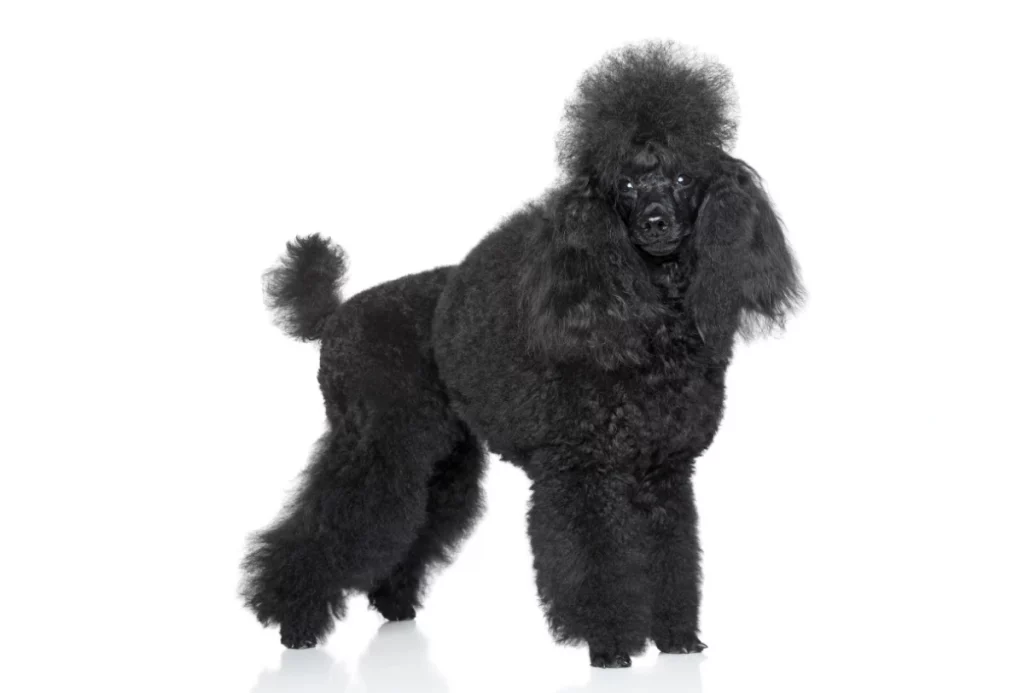
If you’re an owner or a breeder and are thinking about getting your Poodle’s tail docked, then you must get it done professionally. The tail is made of up to 23 vertebral bones and requires an expert to dock their tail without being hurt. Therefore you will need to take them to a qualified and experienced vet in tail docking to do so.
Upon taking your Poodle to the vet, you will find they dock their tail in two ways:
Banding technique
The banding technique is a heavily controversial technique that is not always recommended due to the pain or the inaccuracy it can cause. This method involves wrapping a rubber band tightly around a Poodles tail. The purpose of this is to stop the blood flow supply to its tail, and then once the Poodle has no feeling in the tail, then will cut off the blood flow.
Cutting the tail
Cutting the tail is one of the most recommended methods and typically involves using surgical scissors and a scalpel. This is a quick operation done by the vet and can be undergone using anesthesia or with no anesthesia. This technique is usually done when the Poodle is a puppy between 3-5 days old. If the Poodle is young, no anesthesia is needed, whereas the vet tends to use anesthesia if the Poodle is an adult.
Out of both techniques, the tail docking makes a smaller tail that stands upright instead of the pompom. Moreover, if tail docking is undergone when the Poodle is an adult or they’re older than the average docking timeline, then there are many risks to it as it can cause many complications.
When Can you Do The tail docking procedure?
As mentioned earlier, the ideal time to dock a Poodle’s tail is when they’re between 3-5 days old as there are fewer medical risks associated with the operation. When it comes to tail docking, the vet tends to look at each puppy individually. This is because it must meet the American Kennel Clubs standard and be the same height as the Poodle’s head. Here are the typical guidelines for the three types of Poodle:
| Toy Poodle | 1/2-2/3 length to be left off (around 0.5 inch) |
| Miniature Poodle | 1/2-2/3 length to be left off (around 1 inch) |
| Standard Poodle | 1/2-2/3 length to be left off (around 1.5 inch) |
Why is tail docking controversial?
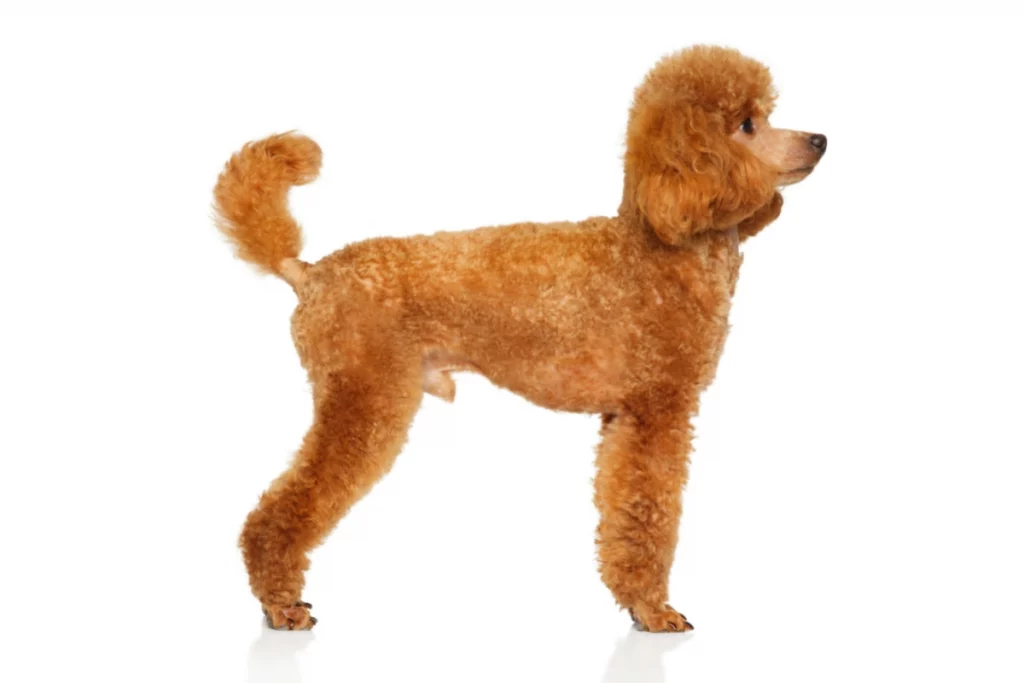
Do you remember earlier when I said that tail docking is an ancient practice? Well, the reason why it’s not as popular as it was before is that there’s a lot of concern that it might hurt your Poodle. It’s a passionate subject that many animal rights activists choose to fight for and something you should take time to think about.
Many people think tail docking can restrict a Poodle’s natural movements, stopping them from running, hunting, and swimming. Many people think that poodles are deprived of their most basic animal rights.
The technique is also painful; it involves cutting muscle, crushing muscle, cartridges, and removing bones. Also, when a dog is recovering from tail docking, its body can experience a lot of inflammation-causing them pain.
There’s a lot of evidence you can find online showing it’s painful to both puppies and adults. If you live in the UK, tail docking is illegal, known as mutilation. On the odd occasion, there are some exemptions like being removed by a vet for medical reasons or working dogs. Moreover, a lot of dog shows don’t allow docked dogs to perform.
You also need to consider that if the docking operation goes wrong, it can cause even more damage to a Poodle! They will likely have long term damage to their nervous system, and it could interfere with their glands that support olfactory signaling.
There is also a risk of a Poodle chewing on its docked tail once the operation is complete. Plus, Poodles may develop a condition known as phantom limb syndrome, where their body still experiences neuropathic pain of their injury site, triggered by their central nervous system.
Should you do it?
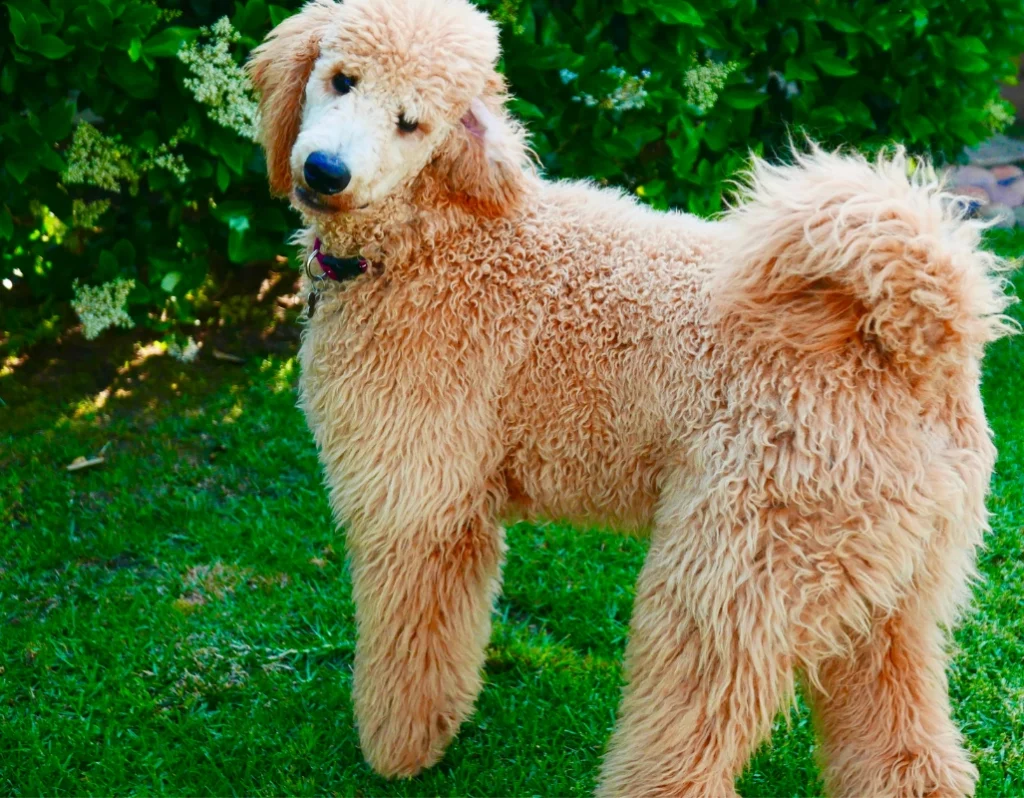
While there is a lot of skepticism around tail docking, I believe you should take your time to consider if your Poodle needs it or not. To help make your mind up, here is a list of pros and cons to look at.
Pros
- Cleaner tail: When a Poodle’s tail is docked, it’s easier to clean and stays clean longer, as it does not have a typical pom pom tail. Plus, it’s less likely feces will linger in their tail, reducing their risk of potential infections and stopping the tail from smelling.
- The tail will be straighter: If you’re a dog owner who does not like a curved tail, then you’re in luck with it because, after docking, a Poodle’s tail turns straight. Their straight tail can also be more aesthetically appealing to look at.
- Smaller chances of accidents: As the tail is shorter, it’s less likely your Poodle’s tail will knock anything over when walking. This can save you money and stop you from buying new ornaments or any other objects it damages.
Cons
- Painful: Regardless of a Poodle being a puppy or an adult, tail docking is a painful experience for them. While happening, the procedure can inflict pain, and afterward, it can cause inflammation.
- Restricts a Poodle from communicating: Dogs are very expressive creatures, and a lot of their emotions are communicated through tail wags. If you cut it, it will restrict their ability and make it harder to showcase their emotions.
- Can cause problems: If the procedure goes wrong, it can cause many problems for your Poodle, which are lifelong.
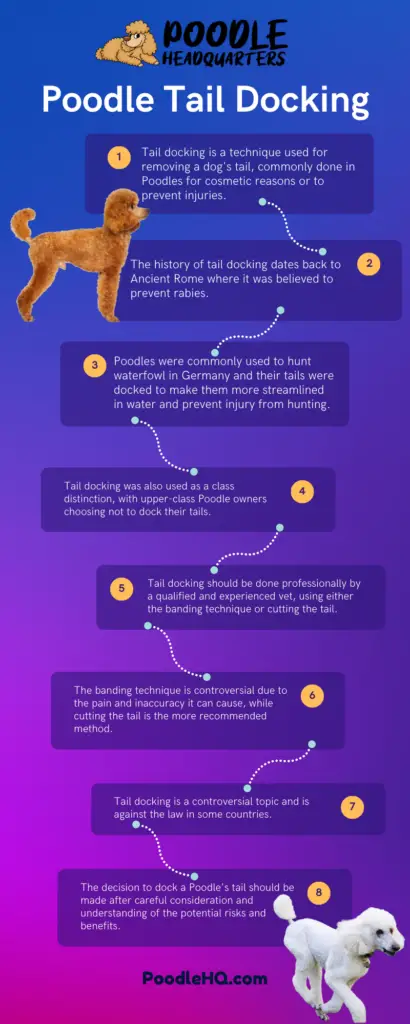
Final thoughts
Overall, when it comes to tail docking, I can’t say whether you should dock your Poodle’s tail or not. Me personally, am against it. If you are thinking about docking your Poodle’s tail, you should take your time to review the pros and cons first. Then, look at the laws under tail docking in your own country and think about the reason for doing so. If it’s legal and you have a valid reason, take your Poodle to a vet to perform this operation. Remember though; the recommended age is 3-5 days as it will cause the dog less pain.
What are your thoughts on tail docking? Let us know in the comments down below.
Marko is the founder and author at PoodleHQ, where he blends profound expertise with formal training in Animal Behavior and Canine Genetics. With multiple generations of poodles under his care, he’s a breed connoisseur, honored with the Canine Care Excellence Award and lauded by the International Pet Enthusiasts Association.

